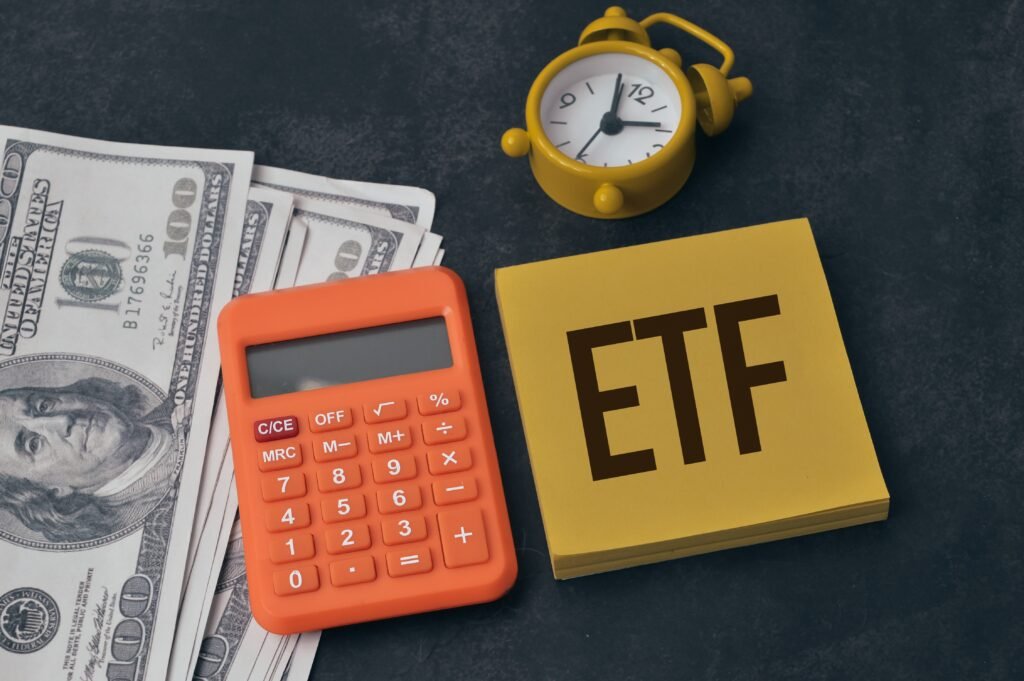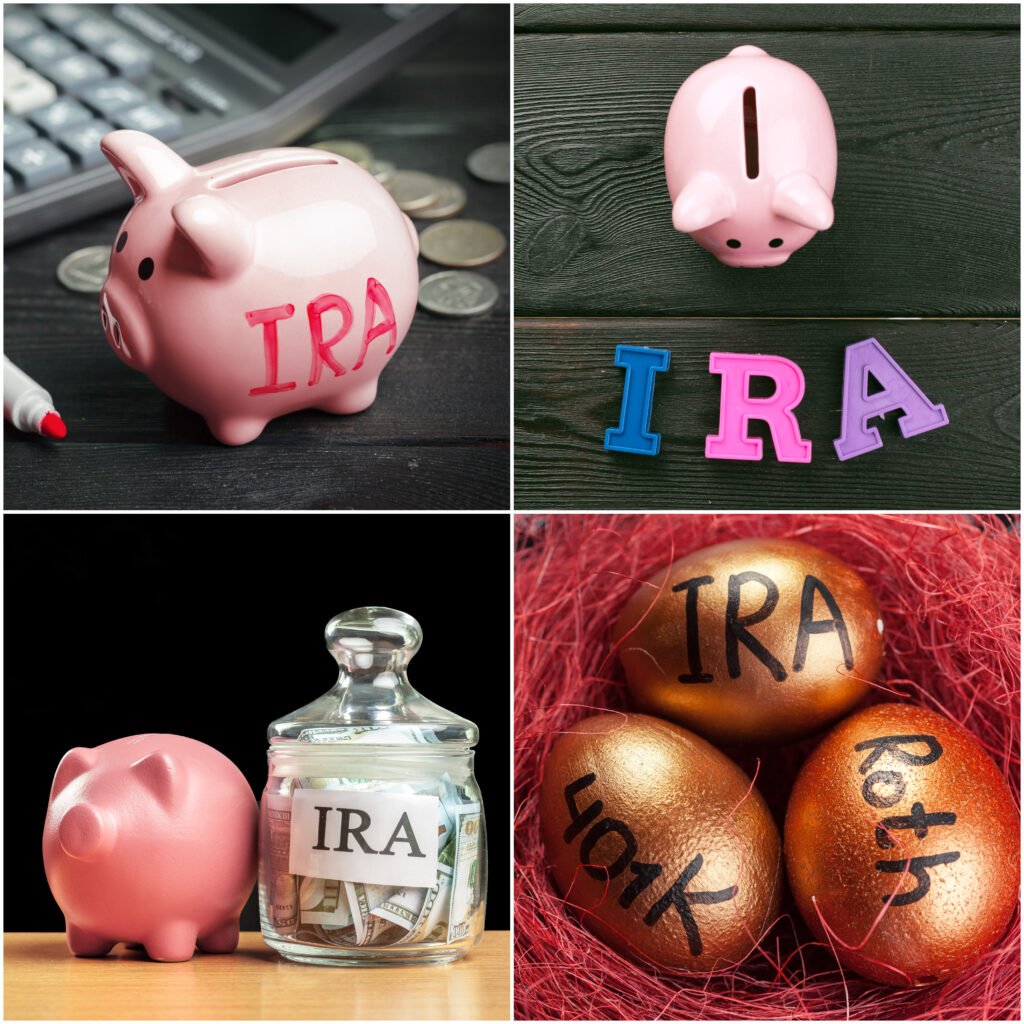Investing can often seem like a complex maze, especially if you’re new to the financial world. But what if I told you there’s a straightforward way to dip your toes into the investment pool without getting overwhelmed? Enter ETFs or Exchange-Traded Funds. These financial instruments are like a one-stop shop for diversification, offering you a slice of multiple assets—be it stocks, bonds, or commodities—all wrapped up in a single package.
The beauty of ETFs lies in their simplicity and flexibility. ETFs have options for everyone, whether you’re a young professional or looking to grow an established portfolio. But like any investment, it’s crucial to approach ETFs with a well-informed strategy. That’s where this article comes in. Consider it your “Step-by-Step ETF Investment Guide,” designed to walk you through the ABCs of ETF investing.
From understanding what an ETF is to learning how to choose the right one for your financial goals, we’ve got you covered. So, if you’re focused on financial growth and improvement, you’re in the right place. Let’s embark on this educational journey to unlock the potential of ETFs and take a significant step toward financial freedom.
Understanding the Basics of ETFs
Investing in the financial market can be akin to navigating a vast ocean. There are various routes you can take, each with its own set of challenges and rewards. One of the most accessible and versatile vessels in this ocean is the Exchange-Traded Fund, commonly known as an ETF. In this section, we’ll demystify what an ETF is and explore why it’s an excellent choice for those striving for financial stability and growth.
What is an ETF?
An ETF, or Exchange-Traded Fund, is a type of investment fund that you can buy and sell on the stock market, much like individual stocks. However, unlike a single stock that represents a piece of one company, an ETF is a basket of multiple assets. It can include a variety of stocks, bonds, commodities, or a mix of these. Think of it as a sampler platter that gives you a taste of different sectors and industries, all in one go.
The primary advantage here is diversification. By investing in an ETF, you’re spreading your money across a range of assets, reducing the risk associated with putting all your eggs in one basket. This makes ETFs a particularly attractive option for beginners or those who prefer a hands-off investment approach.
Why Choose ETFs?
So, why should you consider adding ETFs to your investment portfolio? Let’s break it down:
- Diversification: As mentioned earlier, ETFs offer a simple way to diversify your investments. Whether you’re interested in technology, healthcare, or renewable energy, there’s likely an ETF that aligns with your interests and financial goals.
- Cost-Effectiveness: ETFs generally have lower expense ratios compared to other investment options like mutual funds. This means you get to keep more of your hard-earned money.
- Flexibility: ETFs are traded on stock exchanges, so you can buy or sell them anytime during market hours. This gives you the freedom to adjust your investment strategy as you see fit.
- Accessibility: Most ETFs have a lower entry point compared to other investment vehicles, making them accessible to investors with smaller budgets.
- Transparency: ETFs are required to disclose their holdings daily, providing you with the transparency you need to make informed decisions.
By now, you should have a good grasp of what an ETF is and why it’s a smart addition to your investment strategy. In the next section, we’ll delve into how to choose the right ETF for you, aligning it with your unique financial goals and risk tolerance.
How to Choose the Right ETF
Choosing the right ETF is like picking the perfect pair of running shoes. You need something that fits well, aligns with your goals, and most importantly, takes you where you want to go. This section explains how to select an ETF that meets your financial objectives and risk tolerance..
Assessing Your Investment Goals
Before diving into the sea of available ETFs, it’s crucial to have a clear understanding of your investment goals. Are you looking for long-term growth, or are you more interested in generating regular income? Your goals will guide your ETF selection process.
- Long-term Growth: If you’re aiming for long-term capital appreciation, consider ETFs that focus on growth sectors like technology. For example, the Technology Select Sector SPDR Fund (XLK) could be a good fit.
- Regular Income: If you’re looking for steady income, dividend-focused ETFs might be your best bet. The Vanguard Dividend Appreciation ETF (VIG) is a popular choice for this investment goal.
Analyzing ETF Profiles
Once you have a clear understanding of your investment goals, the next step is to dig deep into the ETF profiles. Here’s what to look for:
- Summary Section: This provides an overview of the ETF’s investment strategy. Make sure it aligns with your financial goals.
- Expense Ratio: This is the annual fee you’ll pay for owning the ETF. Lower is generally better. For example, the Schwab U.S. Broad Market ETF (SCHB) has one of the lowest expense ratios at 0.03%.
Example Diversified ETF Portfolio
Creating a diversified portfolio is key to mitigating risk and achieving a balanced return. Here’s an example portfolio with six different ETFs, each serving a specific purpose:
- Vanguard Total Stock Market ETF (VTI): Provides broad exposure to the entire U.S. stock market.
- iShares MSCI Emerging Markets ETF (EEM): Adds international flavor, focusing on emerging markets like China and India.
- Invesco QQQ ETF (QQQ): Targets the technology sector, offering the potential for high growth.
- Vanguard Real Estate ETF (VNQ): Real estate exposure for diversification and potential income through dividends.
- iShares U.S. Healthcare Providers ETF (IHF): Adds a healthcare component, a generally stable sector.
- iShares 20+ Year Treasury Bond ETF (TLT): Provides long-term U.S. Treasury bonds for stability and income.
Each of these ETFs brings something unique to the table, from sector-specific focus to geographical diversification. Together, they create a well-rounded portfolio aimed at achieving both growth and stability.

A Step-by-Step Guide to Investing in ETFs
You’ve done your homework, assessed your financial goals, and even picked out a few ETFs that seem like a good fit. Now what? It’s time to roll up your sleeves and dive into the actual investment process. In this section, we’ll walk you through the steps of investing in an ETF, ensuring you’re well-equipped to take this significant step toward financial stability and growth.
Opening a Brokerage Account
The first step in your ETF investment journey is to open a brokerage account. This is the platform through which you’ll buy and sell ETFs. When choosing a broker, consider factors like trading fees, account types, and the range of investment options available.
- Research Brokers: Look for reputable brokers that offer a wide range of ETFs and have low trading fees.
- Open an Account: The process usually involves filling out an online application form and providing identification documents.
- Fund Your Account: Once your account is open, you’ll need to deposit funds to start trading.
Making Your First ETF Purchase
Now that your brokerage account is set up, you’re ready to make your first ETF purchase.
- Search for Your Chosen ETF: Use the search function in your brokerage account to find the ETFs you’ve selected.
- Place an Order: You can usually choose between a market order, which buys the ETF at its current market price, or a limit order, where you set the maximum price you’re willing to pay.
- Review and Confirm: Before finalizing the purchase, review all the details to ensure everything is correct.
As highlighted in this Schwab article, ETFs offer numerous benefits, including diversification, trading flexibility, and lower costs. Knowing the underlying strategy of any ETF you’re considering is essential, as is staying informed about market trends that could impact your investment.
Conclusion
Investing in ETFs is more than just a financial decision; it’s a commitment to your future well-being. By now, you should have a comprehensive understanding of what ETFs are, how to choose the right ones for your financial goals, and the steps involved in making your first investment. The beauty of ETFs lies in their simplicity and versatility, offering a range of options to suit various investment needs.
As Warren Buffett wisely said, “Do not put all your eggs in one basket.” This quote perfectly encapsulates the essence of ETF investing. By diversifying your portfolio through carefully selected ETFs, you’re not just mitigating risk but also optimizing your chances for stable growth and income.
So, take the knowledge you’ve gained from this article and apply it. Make informed decisions, diversify wisely, and remember, that the best investment you can make is an investment in yourself.










